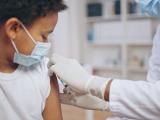Dec 22, 2004 (CIDRAP News) – Most states remain unprepared for a bioterrorist attack despite 3 years of federal focus on the issue, according to a report issued by a national nonprofit organization.
The government must build a comprehensive public health system capable of handling serious day-to-day health problems as well as bioterrorist threats, the Trust for America’s Health (TFAH) asserted for the second year in a row. More than two-thirds of the states scored low on 10 preparedness measures used by TFAH, a nonpartisan organization based in Washington, DC.
The group found evidence of progress but concluded that basic federal and state preparedness is still lacking, according to the report released Dec 14. "Ready or Not? Protecting the Public’s Health in the Age of Bioterrorism—2004" said that no state met all 10 standards. Florida and North Carolina, with nine each, ranked highest for preparedness. Alaska and Massachusetts ranked lowest at three each.
TFAH said 34 states and Washington, DC, improved their scores over last year’s report, 9 held their scores, and 7 states had lower scores this year. But the group noted that some of the standards were modified, making comparisons with last year difficult.
The report noted several trends and problems its authors deemed significant:
- Many basic bioterrorism detection, diagnosis, and response capabilities are not in place
- Almost a third of states cut public health funding in the past fiscal year
- There is little public accountability at the federal level
- Only six states would be in a position to distribute vaccines and antidotes from the Strategic National Stockpile in an emergency
- More than half of the states lack scientists to conduct tests during a suspected smallpox or anthrax outbreak
- Only five public health laboratories have adequate facilities, technology, and staff to respond to chemical threats, and only a third of the states reported they have what they need to respond to bioterrorism
- Two thirds of states aren't tracking disease outbreaks electronically in accordance with national standards, leading to reporting delays and undermining the potential for early warning
- Public health is profoundly affected by the retirement of the baby boomers, who constitute a large portion of the workforce
In addition to those concerns, the report critiques planning for an influenza pandemic. Although planning has improved, it said, 20 states still lack a publicly available response plan.
The organization had four key suggestions:
- Improving bioterrorism planning, with "consistent, measurable standards for improvement"
- Shoring up the fundamentals of a comprehensive public health system
- Using practice drills to measure preparedness
- Liimiting liability to vaccine companies to encourage vaccine development and protect healthcare workers
"We’ve only made baby steps toward better bioterrorism preparedness, rather than the giant leaps required to adequately protect the American people," said Lowell Weicker Jr, TFAH board president, in a news release that accompanied the report. "The conclusions of this study demand an answer to the big question here: What will it take to make bioterrorism and public health preparedness a real national priority?"
See also:


















